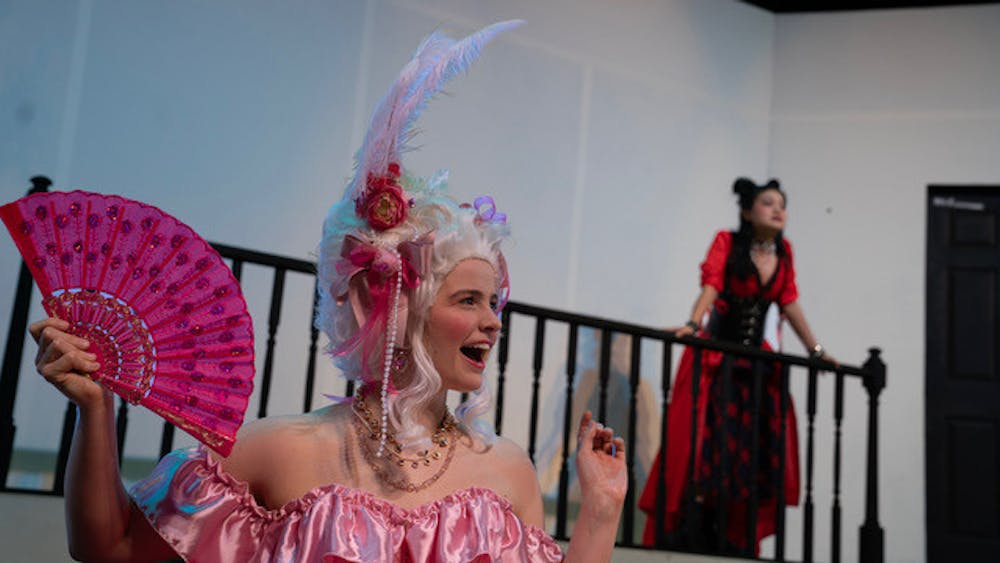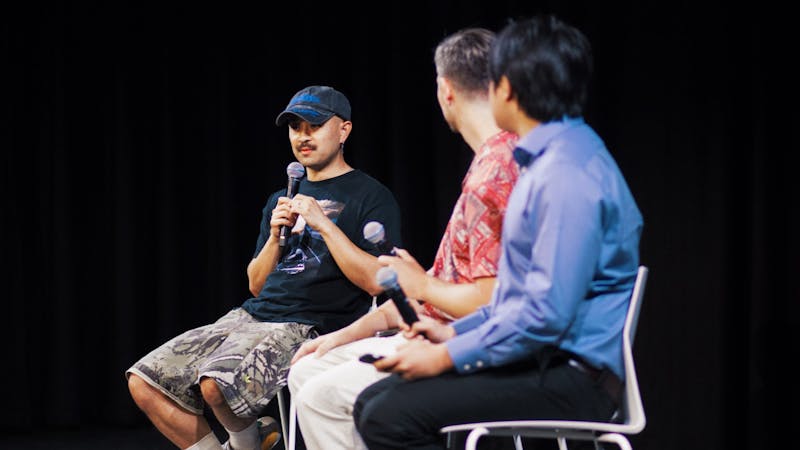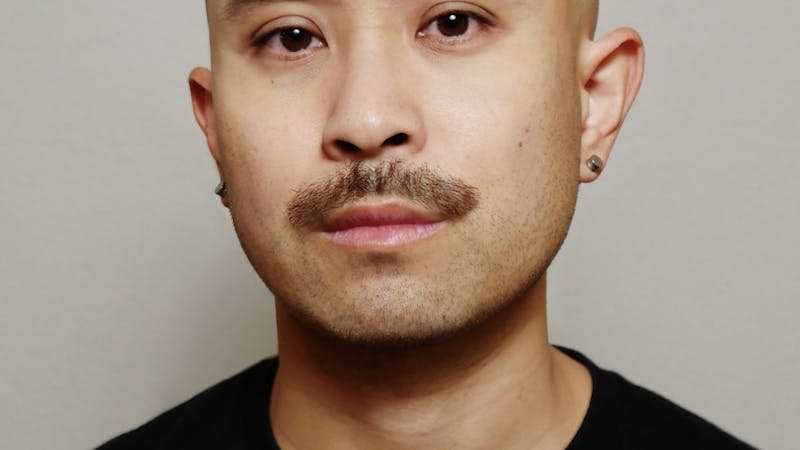‘The Revolutionists’ tackle comédie, égalité et sororité

In “The Revolutionists,” Rice Arts discusses the value of drama to make sense of, and guide our response to, turbulent worlds. The play offers a speculative history of the French Revolution, following four women and their fictionalized friendship.
Throughout the play, the women grapple with the role of art and storytelling during revolution, as they discuss how they should write their literal final lines.
“[The show is about] the work of four different women in the French Revolution, who get in a room and bitch together about whatever the hell is going on in the world,” said Viola Hsia, a Brown College senior who played Charlotte Corday. “They show the work that needs to be done to create change.”
Editor’s Note: Viola Hsia is one of the Thresher’s assistant news editors.
Three of the play’s women — Marie Antoinette, Charlotte Corday and Olympe de Gouges — are real figures, though they are portrayed fictitiously according to CJ Friend, a Jones College sophomore.
Marianne Angelle is a fictional character meant to represent the Haitian women fighting for independence at the time.
Friend played Olympe De Gouges, a playwright and social reformer who was executed by guillotine by leader of the French Revolution Maximilien Robespierre.
The three other characters visit Olympe de Gouges’ home, hoping that she could help them tell their stories.
Charlotte wants to find the perfect words to say just before she kills politician Jean-Paul Marat.
Marie Antoinette is concerned with who she will be remembered and hopes that a play could protect her legacy.
And Marianne Angelle wants help to write pamphlets pointing out the hypocrisy of the French Revolutionaries, who have failed to advocate for the slaves of Haiti.
“To me, Olympe De Gouges is very analogous to people who are in the arts [today] and engage with art but don’t necessarily extend that to their political activism,” Friend said. “But by the end, she has this transformation and becomes more outspoken.”
De Gouges’ character arc is the opposite of Charlotte Corday’s in the play, forcing the audiences to engage with themes of art and action, said Hsia.
“There’s a moment at the end of Act 1 where [Corday] reckons with the fact that just because she killed Jean-Paul Marat, the world isn’t suddenly changed,” Hsia said. “She has to come to terms with the fact that there’s more than one way to make an impact.”
For Chioma Modilim, a junior at Will Rice College who plays Marianne Angelle, her character learns the importance of telling her own story, rather than relying on others to represent it.
“You have the power to tell people what happened to you and your experience, and if you want that message spread right and correctly, then you have to stand up and take it on yourself,” Modilim said.
Despite the show’s heavier political messages, the show is still a comedy, said Liz Cox, the show’s sound board operator.
“It’s really funny to see Olympe De Gouge freak out and be a drama queen, and Marie Antoinette be the dumb blonde airhead pretty girl,” Cox, a freshman at Brown College, said.
While the set itself was pared back with a chaise lounge, desk and balcony, impactful lighting provides visual stimulation.
It also helps develop the plot by creating moments of introspection and abstraction, said Nick Harrison, one of the show’s lighting designers.
“The play occurs in the protagonist’s mind, so our design needed to be able to uproot the play from reality when needed,” wrote Harrison, a Baker College senior.
A glowing red guillotine, made from embedded rope lights, is the glue to Harrison’s concept, he said.
“[It gave] our design a ‘Stranger Things’-esque horror aesthetic,” Harrison wrote.
The play’s costume design – featuring dramatic wigs, bold corsets, vivid colors and even a fan – made the characters come alive, said Katie Maurano, who plays Marie Antoinette.
“When they put me in that hot pink costume, makeup and wig, I was like oh, I know who Marie Antoinette is,” said Maurano, a Jones College junior.
The costumes also balance out the more intense moments of the play, when these women face their mortality, she said.
At the beginning of the play, Olympe De Gouges tells the audience that it will start off as a comedy and become a tragedy. She doesn’t mention that along the way, you’ll be inspired to reflect on your own life.
“I think going to the show, and seeing how each of these poor women have their own take on what to do when you’re in the middle of a mess like this, is good to see,” Modilim said. “Hopefully, you ask yourself what you’re doing about it.”
More from The Rice Thresher

Worth the wait: Andrew Thomas Huang practices patience
Andrew Thomas Huang says that patience is essential to being an artist. His proof? A film that has spent a decade in production, a career shaped by years in the music industry and a lifelong commitment to exploring queer identity and environmental themes — the kinds of stories, he said, that take time to tell right.

Andrew Thomas Huang puts visuals and identity to song
Houston is welcoming the Grammy-nominated figure behind the music videos of Björk and FKA twigs on June 27.

Live it up this summer with these Houston shows
Staying in Houston this summer and wondering how to make the most of your time? Fortunately, you're in luck, there's no shortage of amazing shows and performances happening around the city. From live music to ballet and everything in between, here are some events coming up this month and next!

Please note All comments are eligible for publication by The Rice Thresher.